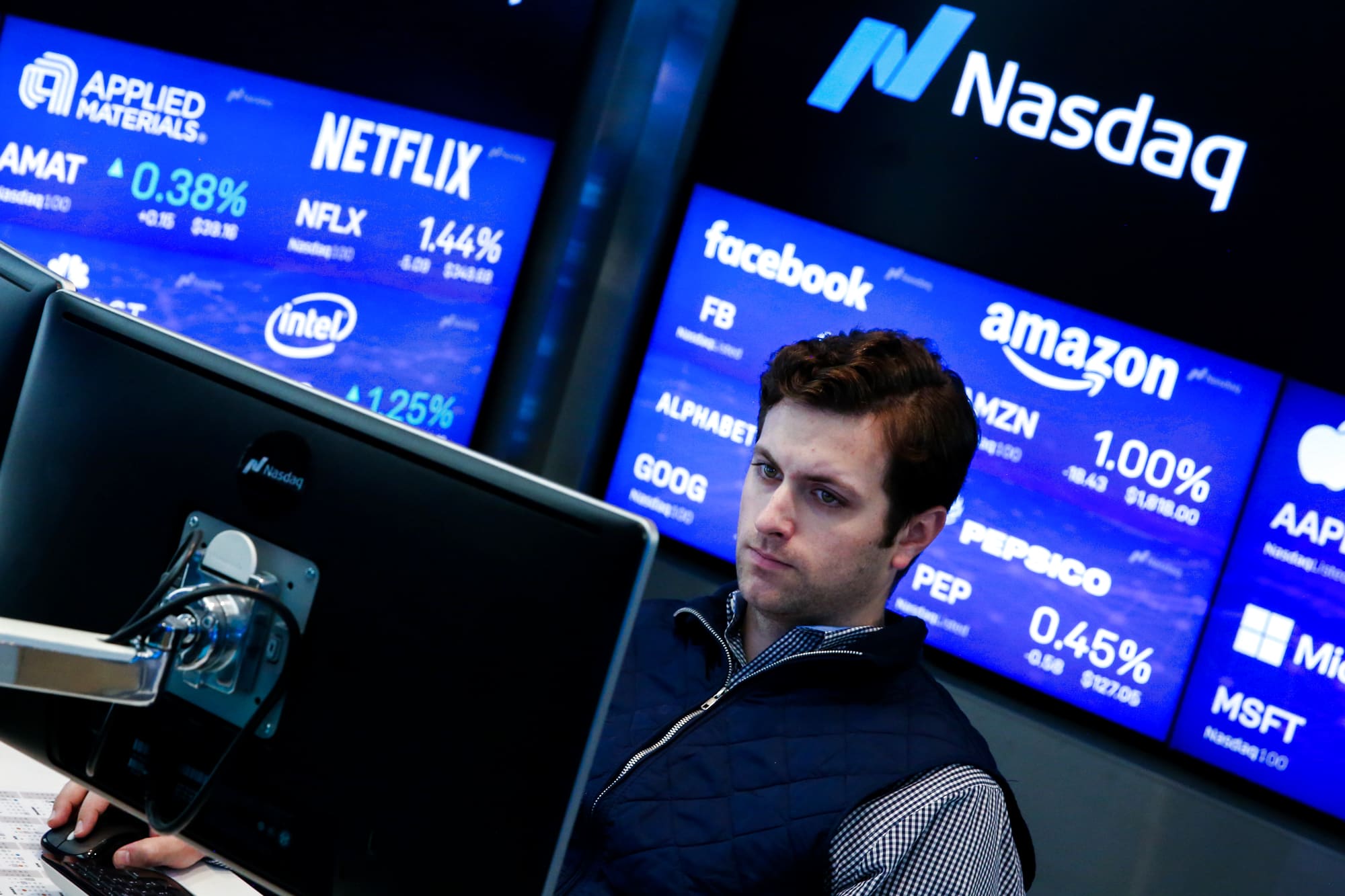S&P 500 slips from record, Nasdaq stocks slammed as 10-year yield jumps

U.S. stocks fell on Thursday led by technology shares as a spike in bond yields fueled fears of equity valuations and caused investors to sell growth-focused high flyers.
The S&P 500 slid 0.6%, falling from a record closing high reached in the previous session. The tech-heavy Nasdaq Composite dropped 1.3% as Apple, Alphabet, Microsoft and Facebook all fell at least 1%. Tesla slipped more than 3%. The Dow Jones Industrial Average traded flat, supported by bank shares.
The move came as the 10-year Treasury yield jumped 11 basis points to 1.75%, its highest level since January 2020. The 30-year rate also climbed 6 basis points and breached the 2.5% level for the first time since August 2019. Rising bond yields can have an outsized impact on growth stocks as they make their future returns less valuable today.
Investors digested a mixed bag of economic data Thursday. Weekly initial jobless claims totaled 770,000 for the week ended March 13, worse than an estimate of 700,000, according to economist polled by Dow Jones.
Meanwhile, the Philadelphia Federal Reserve’s manufacturing index showed a reading of 51.8, well exceeding Dow Jones consensus of 22.0 and hitting the highest level for the gauge since 1973.
Bank stocks outperformed as higher interest rates tend to improve their profit margins. Banks can earn more from the widening gap between the rate they borrow at in the short term and the rate they lend out at in the long term. JPMorgan jumped 2%, while Goldman Sachs gained 1.9%. Citizen Financial popped 4% and Zions Bancorp rallied 3.6%.
The blue-chip Dow closed above 33,000 for the first time on Wednesday after the Federal Reserve said it does not expect to hike interest rates through 2023.
Fed Chair Jerome Powell reiterated that the central bank wants to see inflation consistently above its 2% target and material improvement in the U.S. labor market before considering changes to rates or its monthly bond purchases.
The key message from Wednesday’s Fed meeting “is that the committee expects to be extraordinarily accommodative for a very long time to come, even as the economic outlook brightens,” wrote Eric Winograd, senior economist at AllianceBernstein.
“The FOMC shares the market’s view that growth and inflation are likely to rebound as activity surges in 2021, but it does not view that surge in activity as durable,” he added.
The Fed upgraded its economic outlook to reflect expectations for a stronger recovery while simultaneously quelling investors’ concerns that it could abandon its easy monetary policy sooner than expected.
The central bank said it expects to see gross domestic product grow 6.5% in 2021 before cooling off in later years and inflation rise 2.2% this year as measured by personal consumption expenditures. The central bank’s stated goal is to keep inflation at 2% over the long run.




